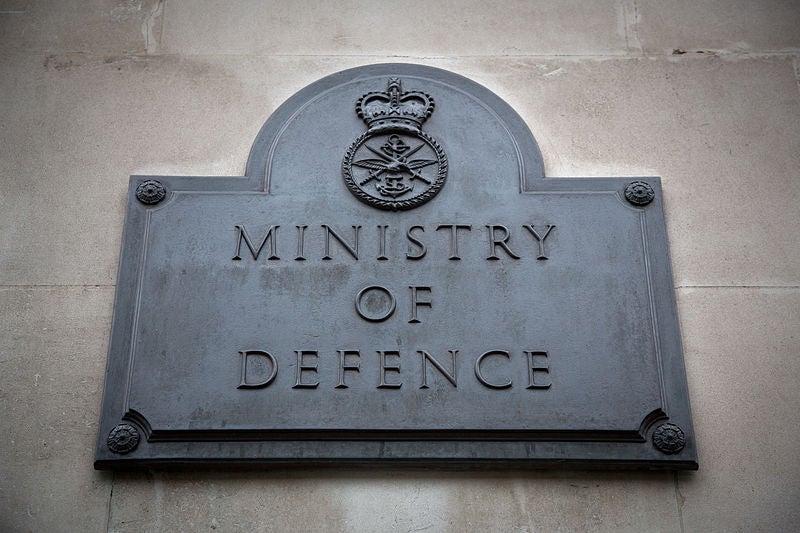
Project Thundercloud
The JFC aren’t exactly talking up a storm about its oceanographic and weather communication system, though it has signalled a call for support to work on Project Thundercloud. Thundercloud is a data management system that collects, analyses, and distributes oceanographic and weather information to military departments. The priority of the tender is to secure the installation services of computers and information-gathering equipment to aid this capability and to maintain its future, with the aim of acquiring uninterrupted support for the project. For the sustainability of the project, support will be needed from the Joint Meteorology and Oceanography Centre (JOMOC) to Front Line Consumers of Meteorological and Oceanographic (METOC) Geospatial Intelligence (GEOINT).
Project Thundercloud has previously been maintained by QINETIQ, which in 2014 signed a four and a half year deal for £15.8m, which continued services relating to Thundercloud that had been running for 15 years at the time.
Thundercloud transmits environmental information through interconnected systems to air, sea, and land operations, which is then processed to give a detailed understanding of the surroundings, providing shared situational awareness across the different military teams. However the project requires future support to maintain the capability.
The system is made up of multiple elements, consisting of hosting and storage environments with associated software tools, data management capabilities, communications and IT infrastructure that is accessible over a wide area network (WAN) and hardware that is located across multiple locations. Heightened visibility is a crucial advantage for navy, air force, and land-based teams requiring information on their landscapes when planning out operations.
Having that enhanced situational awareness with oceanographic and weather data is highlighted by the Ambient Noise Prediction System (ANPS), which is a system that is developed and managed by Systems Engineering & Assessment (SEA) and used by the UK Royal Navy. ANPS utilises meteorological and oceanographic forecasts in addition to oceanographic databases and carries out acoustic propagation calculations that produce frequent forecasts of ambient noise conditions in the ocean.
These regular forecasts are then leveraged by the Royal Navy vessels to enhance the effectiveness of their sonars and increase the efficiency and accuracy when calibrating their systems based on sonar frequencies. It also helps create more accurate depth measurements, which support more efficient planning of naval operations.
To acquire future support for the project, the Imagery and Geospatial Delivery Team (IMaGE DT) are hosting a two year competition with the option to extend for an additional two years in total, where it will look for partners to work with on Project Thundercloud.
New high-frequency radio communication system
Currently, the existing MOD communication system – Defence High Frequency Communication System (DHFCS) – needs replacing. The system is operated and provided for under contract by Babcock, which is set to expire in June 2021. Good news for potential suppliers is that the MOD has already decided on what the replacement will be.
The current DHFCS system will be replaced by Defence Strategic Radio Services (DSRS) and the MOD is looking for suppliers to develop the capability using new technologies. Initial contact was made to market suppliers through a series of industry engagement days where the MOD laid out its requirements for the new capability.
Primarily operated by the Royal Air Force, Royal Navy and the British Army, the DHFCS is a British military beyond line-of-sight communication system that operates through the transmission from six sites across the UK. The UK sites are all controlled from a network control centre in North Yorkshire, with overseas sites located in Cyprus and the Falklands. A beyond line-of-sight communication system consists of radio transmissions over a path that is obstructed, predominantly by a physical object or if the radio, sound, or light waves travel outside the usual region of space between transmitter and receiver, known as a Fresnel zone.
As it stands the MOD wants to build on the current DHFCS system’s capabilities, although working under a new contract agreement. The DHFCS is a managed service that operates using high-frequency (HF) and low-frequency (LF) communication wavelengths; however the service also includes site and facilities management, antenna and equipment maintenance, radio services and security. At the industry engagement days the MOD outlined the requirements for the new service, as summarised in the tender, which will build on these existing capabilities.
Although the MOD wants to keep many of the capabilities of the new system in line with the existing service, the main difference moving forward is for future partners to develop and operate the new service by leveraging improved and emerging technologies. This will in-turn lay down the foundations for continuous updates across the service’s lifetime, with the goal of eventually exploiting HF innovations.
Defence extra spending
The signs are there that the MOD is investing and looking to upgrade many of its communications infrastructure and systems across the different military departments. Clearly the transmitting of information is high on the priority list for defence spending following the additional budgetary allocation the sector received from ex chancellor, Philip Hammond. In the Treasury budget last year, the defence sector was given a spending boost of £1bn, with three main programs in mind, one being cyber.
In June 2019, Jeremy Hunt promised a defence spending package of £15bn that was to be used to bolster the UK’s defences against the growing threat of Russia, which has primarily come in the form of cyber-threats and meddling in political affairs. All the more reason to upgrade and keep military communication systems squeaky clean and operating more effectively. With the coming of new PM Boris Johnson, it is unclear if these defence spending boosts will continue in this fashion, having already promised swathes of funds elsewhere.





